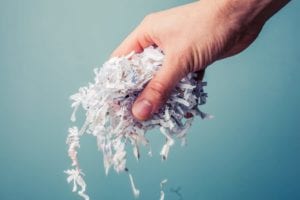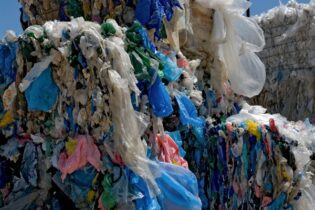It is estimated that only 6.1% of metropolitan households in South Africa actively participate in recycling. However, even the most environmentally conscientious people make recycling mistakes.
You might even think your home is paperless, so you don’t need to recycle. Have you considered the sturdy cardboard box and its moulded protective layers that housed your new TV during transit? Or the box from your latest online shopping haul? Cereal boxes? Milk cartons? What about the loo roll core? All of these are recyclable in South Africa. Fibre Circle, the producer responsibility organisation for the South African paper and paper packaging sector, outlines some of the more common recycling mistakes, with some helpful tips to make sure that paper and cardboard get to where they need to be: to recycling companies in a good, clean state so they can be reprocessed and made into new paper products.Mistake 1: Putting non-recyclable paper products into the recycling bin
Even though they are made of paper, several items are not suitable for recycling due to food contamination or elements such waxes, foils, laminates, and glues. These products should not be put in your paper recycling bin.Fix it by:
- Putting up printable educational posters near recycling bins, so everyone knows what can and can’t be recycled.
RECYCLABLE
- Magazines and brochures, including glossy varieties
- Newspapers
- Office and shredded paper, envelopes
- Cardboard boxes of any kind – dry food, cosmetic and medicine boxes; roll cores, packing cartons
- Old telephone directories and books
- Envelopes
- Paper giftwrap (minus decorations)
- Milk, beverage and food cartons
NOT RECYCLABLE
- Wet or dirty paper and cardboard
- Used paper plates, disposable nappies, tissues and toilet paper
- Wax-coated, foil-lined or laminated boxes
- Cement and dog food bags
- Foil gift wrapping, carbon and laminated paper
Mistake 2: Food contamination
When wet waste – food waste, cigarette butts and soiled take-away containers – ends up in the paper recycling bin, this contaminates the paper and reduces its value. Paper also starts to degrade and reduces the strength of the fibres.Fix it with:
- A two-bin system – place receptacles for recycling next to bins for food and non-recyclable waste.
- Teamwork – chat to your family and domestic helpers about your waste separation system.
Mistake 3: Making it difficult and time-consuming for family members to recycle
We are all human. Nobody likes to walk too far to throw something away.Fix it with:
- Recycling receptacles in key locations – or bin separators:
- In the kitchen
- In the bathroom
- In bedrooms
- In the office
- Near the front door or in the garage
Mistake 4: Not knowing what to do with your recyclables
Your family has collected all this paper (and other recycling), and after a while, it all ends up in the general rubbish.Fix it with:• A sheltered area in which to keep recycled paper clean and dry.
- A phone call to a smaller business about their recycling collection programme
- A chat with an informal collector about the recycling he or she collects.
- Finding local school or charity’s recycling fundraising initiative
Why recycle paper?
- Circular economy – Paper is repulped to make new paper products that we use every day such tissue and paper packaging. South Africa currently recovers 69.8% of paper for recycling so there is room for improvement.
- Landfill space – A tonne of recycled paper can save up to three cubic metres of landfill space and is used to make new paper products that we use every day.
- Job creation – Big and small companies as well as informal collectors make money (and employ people) through the recovery and processing of clean, quality recyclable paper.







